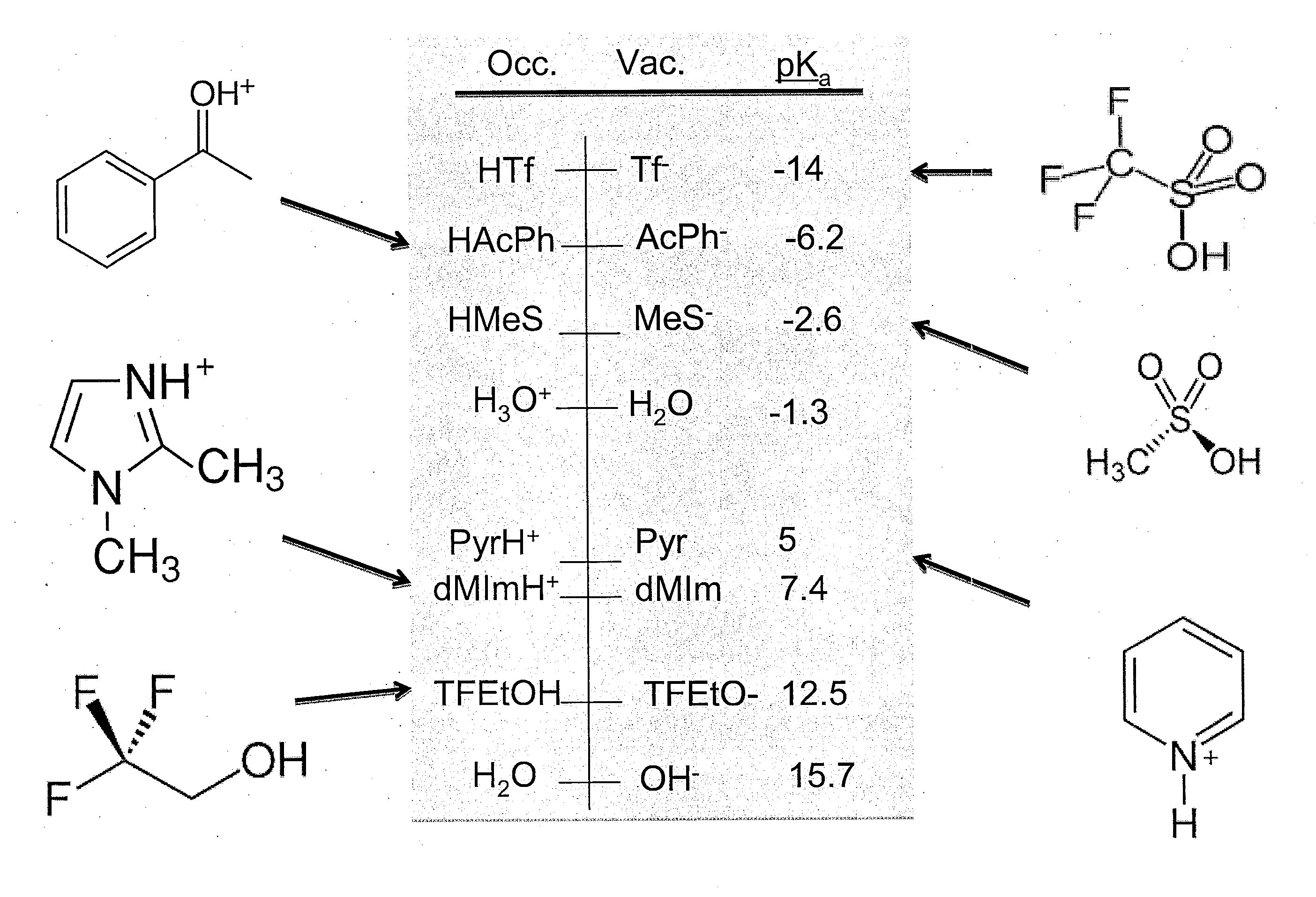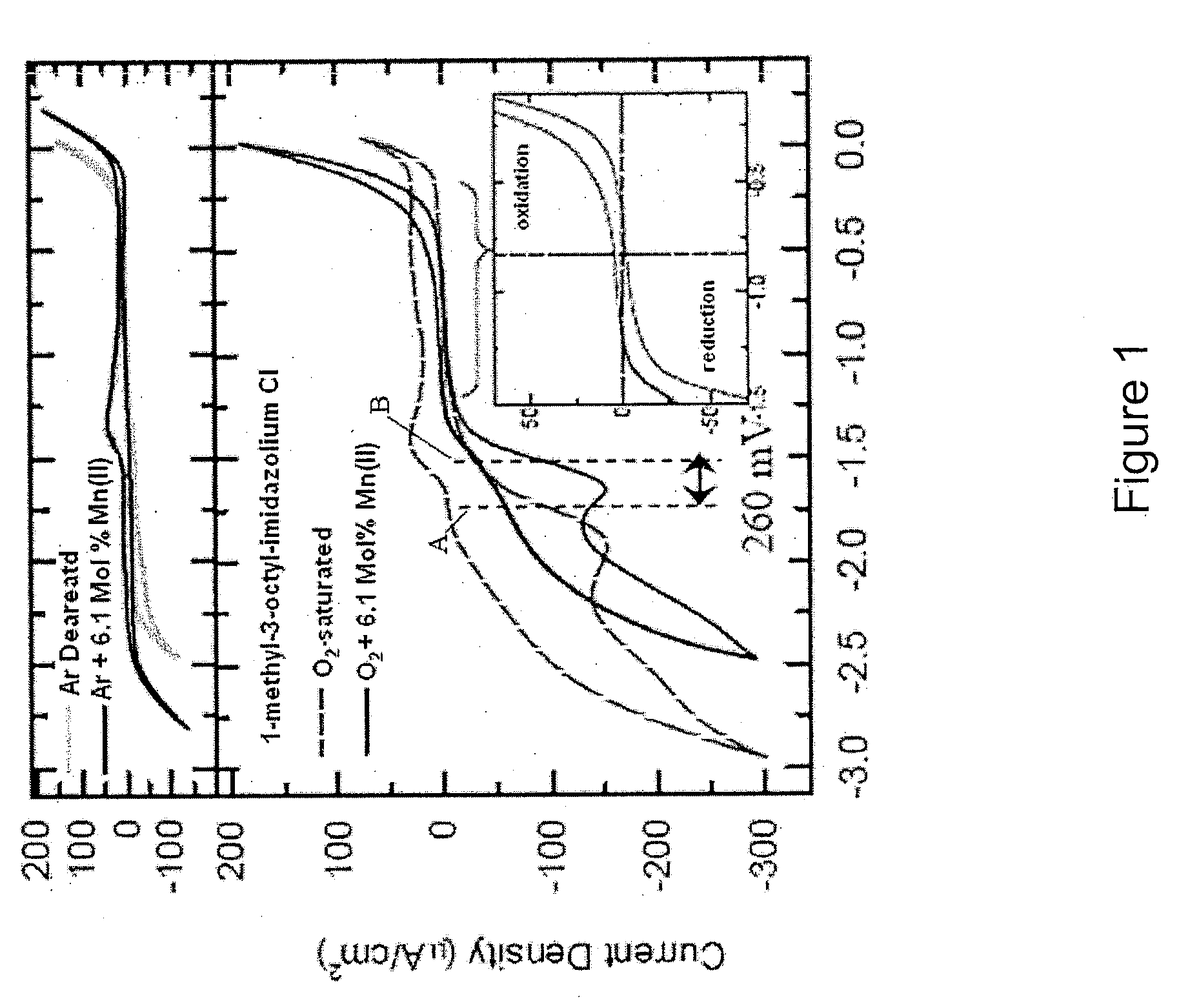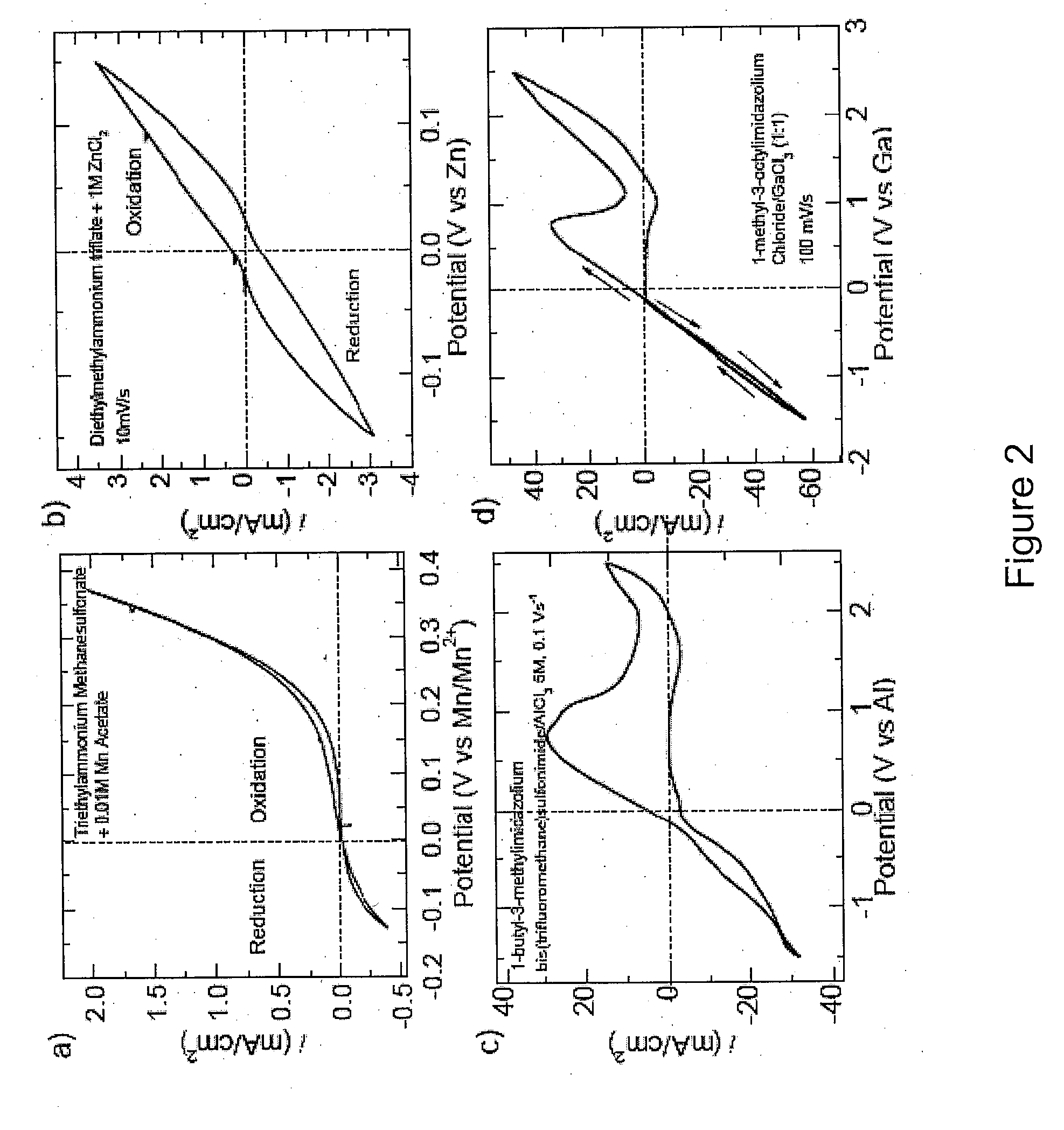Metal-air cell with performance enhancing additive
a technology of metal-air batteries and additives, which is applied in the direction of aqueous electrolyte fuel cells, cell components, electrochemical generators, etc., can solve the problems of ineffective cell operation, cell inoperable before the fuel consumption, and significant limiting factor of conventional metal-air batteries, etc., to achieve the effect of improving oxygen reduction thermodynamics and kinetics
- Summary
- Abstract
- Description
- Claims
- Application Information
AI Technical Summary
Benefits of technology
Problems solved by technology
Method used
Image
Examples
working examples
NON-LIMITING WORKING EXAMPLES
A series of protic additives were added into an ionically conductive medium in order to examine the effects of such additives upon oxygen reduction reaction (“ORR”). An aprotic ionic liquid BdMelm:Tf was used as the host for the additive. A photograph of an experimental setup is provided in FIG. 5(a), with FIG. 5(b) showing a cartoon of a close-up of the measurement tube / chamber. This particular IL was chosen for its electrochemical air, and water stability of its ions and that the protonation of superoxide in BMlm was observed even in very dry systems. For example, BDMelm Tf has a melting point of about 35° C., density of about 1.4 g / mL, and oxygen solubility of about 2.5 mM, as measured gravimetricallty and through Cottrell, diffusivity of about 7.5×10-6 cm2 / s as measured for dry ORR on glassy carbon (GC) and with Cottrell. See e.g., FIG. 5(f). Also, the IL had the benefit of the superacidity of Tf, which minimizes solvent leveling effects. Additional ...
PUM
| Property | Measurement | Unit |
|---|---|---|
| melting point | aaaaa | aaaaa |
| vapor pressure | aaaaa | aaaaa |
| vapor pressure | aaaaa | aaaaa |
Abstract
Description
Claims
Application Information
 Login to View More
Login to View More - R&D
- Intellectual Property
- Life Sciences
- Materials
- Tech Scout
- Unparalleled Data Quality
- Higher Quality Content
- 60% Fewer Hallucinations
Browse by: Latest US Patents, China's latest patents, Technical Efficacy Thesaurus, Application Domain, Technology Topic, Popular Technical Reports.
© 2025 PatSnap. All rights reserved.Legal|Privacy policy|Modern Slavery Act Transparency Statement|Sitemap|About US| Contact US: help@patsnap.com



